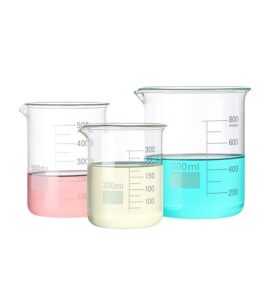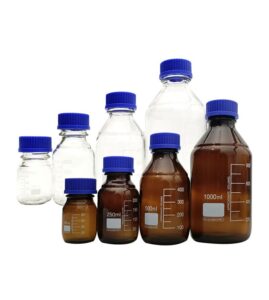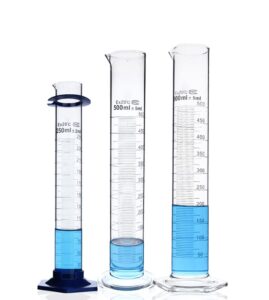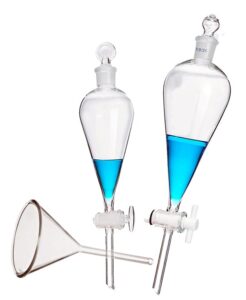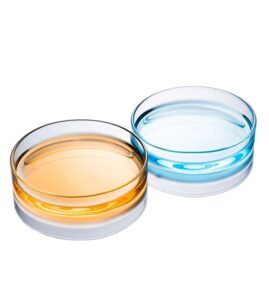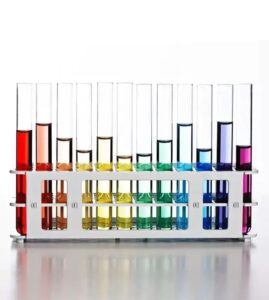Have you ever paused to consider the materials that make up the glassware in your lab? Why is some glassware so resistant to heat and chemicals, while others are more fragile? The answers to these questions are not just fascinating; they’re crucial for anyone involved in scientific research or education.
Glassware is an integral part of any laboratory, providing the necessary tools for experiments and research. The materials used in lab glassware are designed to withstand extreme conditions, such as high temperatures and corrosive chemicals. But what makes these materials so special? Let’s delve into the science behind your lab equipment.
Understanding the materials used in your lab glassware is not just about satisfying curiosity; it’s about ensuring safety and efficiency in your experiments.
The General Properties of Glass
Glass is a fascinating material with a broad range of applications, particularly in laboratory settings. The primary ingredients of glass include silica (SiO₂), boron oxide (from boric acid H₃BO₃ or borax Na₂B₄O₇·10H₂O), lime (CaO), cullet (broken glass), phosphorus pentoxide (P₂O₅), and alkalis (such as Na₂O, derived from NaNO₃, Na₂B₄O₇, etc.), along with other oxides of potassium, magnesium, zinc, and aluminum.
One of the standout features of glass products is their excellent chemical resistance to water, salt solutions, acids, bases, and organic solvents, surpassing most plastic products. Glassware is generally resistant to attack from all chemicals except hydrofluoric acid and strong alkaline solutions or concentrated phosphoric acid under elevated temperatures. Additionally, glass products maintain their shape (even under heat) and are highly transparent, making them ideal for a wide range of laboratory applications.
Key Materials in Laboratory Glassware
Borosilicate glass is perhaps the most well-known material, renowned for its heat resistance and durability. This glass type can withstand temperature changes without cracking, making it ideal for heating and cooling processes.
Soda-lime glass, on the other hand, is more common and less expensive but does not offer the same level of resistance to heat and chemicals. It is often used for containers and bottles rather than for direct heat applications.
Quartz glass stands out for its ability to withstand extremely high temperatures and its transparency to ultraviolet light, making it valuable for specific scientific applications that require purity and durability under intense conditions.
Understanding these materials can help you choose the right glassware for your experiments, ensuring safety and effectiveness in your research.
Real-life Applications of Key Materials of Glass in Laboratory Glassware
Different types of laboratory glassware find their best use in specific experimental contexts, illustrating the importance of material choice in ensuring success and safety. Here are a few examples:
- Borosilicate Glass: Renowned for its thermal shock resistance and durability, borosilicate glass is the ideal choice for conducting high-temperature reactions or when using a Bunsen burner. An example includes heating organic compounds under reflux, where the glassware needs to withstand both the heat and the aggressive solvents.
- Soda-Lime Glass: Due to its affordability and adequacy for storing solutions, soda-lime glass is commonly used for bottles and jars that contain distilled water or standard solutions not sensitive to minor temperature changes or chemical reactivity. However, it’s not recommended for applications involving strong acids or bases.
- Quartz Glass: With its exceptional resistance to high temperatures and its ability to transmit UV light, quartz glass is indispensable for photolysis reactions where UV light is required to initiate chemical processes. It’s also preferred for precise optical applications due to its clarity.
Understanding the specific scenarios in which each type of glass excels can significantly enhance the efficiency and safety of laboratory work.
Why Material Matters in Lab Equipment
The material of your lab glassware affects not just its performance but also the accuracy of your experiments. Using the wrong type of glass could lead to chemical reactions, contamination, or even breakage under high temperatures.
Durability, chemical resistance, and thermal stability are key factors that depend heavily on the material chosen. Borosilicate glass, for example, is preferred for applications involving sudden temperature changes due to its low coefficient of thermal expansion.
For experiments requiring UV light transmission, quartz glass is the go-to material due to its exceptional clarity and resistance to high temperatures.
Selecting the correct material for your lab glassware is crucial for achieving reliable and accurate results in your research.
Specific Glass Types and Their Properties
Laboratories utilize a variety of glass types, each with unique properties catering to different scientific needs.
Sodium-Calcium Glass (e.g., AR-Glas)
Sodium-calcium glass boasts commendable chemical and physical properties, suitable for brief contact with chemical reagents and limited thermal shock applications.
Borosilicate Glass (BORO3.3, BORO5.4)
Borosilicate glass is renowned for its superior chemical and physical properties. According to DIN ISO 3585 standards, this type of glass has a linear coefficient of thermal expansion of 3.3, making it ideal for applications requiring excellent chemical resistance, thermal resistance (including thermal shock resistance), and high mechanical stability. It is the preferred choice for chemical apparatus, such as round-bottom flasks, beakers, and volumetric devices.
Cost Considerations of Key Materials of Glass in Laboratory Glassware
When equipping a laboratory with glassware, understanding the cost implications of different glass types is crucial for budget planning, especially for educational institutions and small-scale research facilities. The primary glass types used in labs vary not only in their physical and chemical properties but also in their cost, which can significantly affect a lab’s budget.
- Soda-Lime Glass: This is the most economical option available, making it a popular choice for general lab work that does not require high thermal or chemical resistance. Its affordability makes it suitable for teaching laboratories and applications where glassware is frequently replaced.
- Borosilicate Glass: While more expensive than soda-lime glass, borosilicate glass offers superior thermal shock resistance and chemical stability. Its higher initial cost is offset by its durability, making it a cost-effective choice for laboratories conducting high-temperature experiments or using aggressive chemicals, where glassware longevity is crucial.
- Quartz Glass: The most expensive of the three, quartz glass is necessary for specialized applications that require resistance to very high temperatures or transparency to ultraviolet light. Its use is typically justified in advanced research where specific physical and chemical properties are essential for the experiment’s success.
Considering the trade-offs between cost and performance is vital when selecting lab glassware. Initial investments in more durable materials like borosilicate or quartz glass can lead to long-term savings by reducing the need for frequent replacements due to breakage or wear.
The Key Properties and Costs of Laboratory Glassware Materials
To provide a clearer overview of the differences between soda-lime, borosilicate, and quartz glass, a comparison chart can be extremely helpful. Below is a simplified comparison table summarizing the key properties and cost considerations of each glass type:
| Property | Soda-Lime Glass | Borosilicate Glass | Quartz Glass |
|---|---|---|---|
| Thermal Resistance | Low | High | Very High |
| Chemical Resistance | Moderate | High | Very High |
| UV Transparency | Poor | Good | Excellent |
| Cost | $ (Least Expensive) | $$ (Moderate) | $$$ (Most Expensive) |
| Typical Use | General storage, simple experiments | High-temperature processes, chemical handling | UV-related experiments, high-precision optical work |
Maintenance and Cleaning Tips
Proper maintenance and cleaning of laboratory glassware are critical to ensure the accuracy of experiments and extend the lifespan of the equipment. Here are some general tips, along with considerations for different types of glass:
- General Maintenance: Always inspect glassware for cracks or chips before use, as damaged glassware can be a safety hazard. After use, glassware should be rinsed with water to remove any residues.
- Cleaning Soda-Lime and Borosilicate Glass: These types of glassware can generally be cleaned with standard laboratory detergents and hot water. For stubborn residues, soaking in a mixture of detergent or using a brush can be effective. Rinse thoroughly with distilled water to prevent any residue from affecting future experiments.
- Handling Quartz Glass: Quartz glass requires more careful handling due to its higher cost and specific applications. Avoid using abrasive materials that could scratch the surface. For cleaning, mild detergents and distilled water are recommended. Rinse thoroughly and dry carefully, avoiding any harsh mechanical drying methods that could introduce micro-scratches.
- Preventing Cross-Contamination: Always use separate cleaning supplies for different types of glassware, especially when handling materials sensitive to contamination, such as quartz glass.
- Storage: Store glassware upside down on a clean, stable surface or in a designated glassware cabinet to prevent dust accumulation. Ensure that the glassware is completely dry before storage to avoid mold growth.
By incorporating these real-life application examples and maintenance tips, readers can better understand how to select and care for their laboratory glassware, thereby ensuring the reliability of their experiments and the longevity of their equipment.
Utilizing Glassware Safely and Effectively
When employing glassware, it’s vital to consider its resistance to thermal shock and mechanical stress. Adhering to strict safety measures is essential:
- Continuous stirring and cooling of reagents are essential during exothermic reactions, such as diluting sulfuric acid or dissolving sodium hydroxide. Appropriate containers, like Erlenmeyer flasks, must be chosen, and graduated cylinders or volumetric flasks should not be used.
- Glass instruments must not be exposed to sudden and extreme temperature changes. For instance, when removing glassware from a hot drying oven, do not immediately place it on a cold or wet surface.
- For pressurized applications, only glassware designed for such use should be employed. For example, filtration flasks and desiccators should only be used under vacuum after ensuring they are intact.
Chemical Resistance and Mechanical Durability of Glass
Chemical Resistance
The chemical interaction between glass and water or acids is minimal to negligible; only a very small amount of primarily monovalent cations leach from the glass. A very thin, nearly impermeable silica gel layer forms on the glass surface, preventing further erosion. Hydrofluoric acid and hot phosphoric acid are exceptions, as these acids inhibit the formation of the protective layer.
Interaction with Alkalis
Alkalis etch glass, and this effect intensifies with increasing concentration and temperature. Borosilicate glass 3.3 can limit surface etching to micrometer levels. However, with prolonged contact, volume changes and/or damage to calibration may still occur.
Hydrolytic Resistance
Class 1 hydrolytic glass meets the highest level of water resistance as per DIN ISO 719 (98°C), which means when glass particles of 300-500μm are exposed to water at 98°C for 1 hour, less than 31μg of Na₂O per gram of glass dissolves. Additionally, class 1 hydrolytic glass also meets the highest level of resistance according to DIN ISO 720 (121°C), indicating less than 62ug of Na₂O per gram of glass is hydrolyzed when exposed to water at 121°C for 1 hour.
Resistance to Acids
Class 1 hydrolytic glass meets the highest level of acid resistance according to DIN 12 116. It is also referred to as acid-resistant borosilicate glass; when boiled in 6N HCl for 6 hours, its surface etching is less than 0.7mg/100cm²; per DIN ISO 1776, the Na₂O loss is less than 100ug Na₂O/100cm².
Resistance to Alkalis
Class 1 hydrolytic glass meets the second level of alkali resistance according to DIN ISO 695. Boiling in an equal volume of sodium hydroxide (1mol/L) and sodium carbonate (0.5mol/L) for 3 hours produces approximately 134mg of erosion per 100cm².
The Mechanical Strength of Glass
Thermal Stress
Thermal stress can be introduced during the manufacturing and handling of glass. During the cooling process of molten glass from a pliable to a hard state, this transition occurs between high and low annealing points. At this stage, existing thermal stresses must be eliminated through a careful, controlled annealing process. Once past the low annealing point, the glass can be cooled more rapidly without introducing significant new stress. Similar precautions apply when reheating glass, such as direct flame heating to a temperature above the strain point, as uncontrolled cooling can “freeze in” thermal stress, significantly reducing the glass’s resistance to breakage and mechanical stability. To relieve inherent stress, glass must be heated to a temperature between the high and low annealing points and held for about 30 minutes, then cooled at a prescribed rate.
Resistance to Temperature Changes
When glass is heated to temperatures below the strain point, thermal expansion and poor thermal conductivity can create tension and pressure. If the mechanical force exceeds what the glass can withstand, due to improper heating or cooling rates, the glass may fracture. The coefficient of thermal expansion, which varies depending on the type of glass, wall thickness, and the shape of the glassware, plays a significant role here. Additionally, any existing scratches or flaws on the glass need to be considered. Therefore, specifying an exact value for resistance to thermal shock is challenging. However, it’s noteworthy that the coefficient of thermal expansion provides a realistic comparison, showing that class 1 hydrolytic glass has a stronger resistance to temperature changes than types like AR-Glas.
Mechanical Stress
From a technical standpoint, glass exhibits ideal elastic behavior, meaning that it does not deform under stress but instead breaks. The tension a piece of glass can endure is relatively low and decreases further if there are scratches or cracks present. For safety reasons, class 1 hydrolytic glass used in mechanical and industrial design can withstand a tension of up to 6N/mm².
Future Directions in Glassware Material Science
The future of laboratory glassware materials is promising, with ongoing research focused on enhancing the performance and environmental sustainability of glass. Innovations in material science are exploring the use of nanotechnology and advanced composites to create glassware with unprecedented properties, such as increased durability, improved chemical resistance, and lower environmental impact.
These advancements are not only aimed at enhancing the scientific capabilities of laboratory glassware but also at making it more sustainable. As material science progresses, we can anticipate the development of glassware that better serves both the scientific community and the environment.
Conclusion
The journey through the world of laboratory glassware reveals the critical importance of selecting the right materials for your scientific endeavors. Embrace the knowledge, choose wisely, and invest in the glassware that aligns with your experimental needs and budget. Let’s champion the advancement of science by equipping our labs with the best materials, fostering innovation, and pushing the boundaries of discovery. Join the movement towards a safer, more efficient, and sustainable future in scientific research. Your choices today shape the laboratories of tomorrow.


